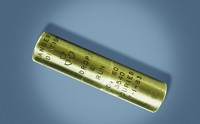Advertisement
Grab your lab coat. Let's get started
Welcome!
Welcome!
Create an account below to get 6 C&EN articles per month, receive newsletters and more - all free.
It seems this is your first time logging in online. Please enter the following information to continue.
As an ACS member you automatically get access to this site. All we need is few more details to create your reading experience.
Not you? Sign in with a different account.
Not you? Sign in with a different account.
ERROR 1
ERROR 1
ERROR 2
ERROR 2
ERROR 2
ERROR 2
ERROR 2
Password and Confirm password must match.
If you have an ACS member number, please enter it here so we can link this account to your membership. (optional)
ERROR 2
ACS values your privacy. By submitting your information, you are gaining access to C&EN and subscribing to our weekly newsletter. We use the information you provide to make your reading experience better, and we will never sell your data to third party members.
Environment
How Polonium Poisons
210Po carpet bombs cells with damaging α-particles
by Ivan Amato
December 4, 2006
| A version of this story appeared in
Volume 84, Issue 49

The polonium-210 poisoning of former Soviet spy Alexander Litvinenko has health physicists dusting off Cold War-era tomes on the biological effects of radioactive isotopes. Data are scarce, especially for human exposure to the isotope, but scientists still have a good idea of how polonium may have led to Litvinenko's death on Nov. 23, 22 days after his alleged poisoning in London.
210Po, once used in triggers for fission bombs, is an α-particle emitter with a half-life of 138 days. It decays into stable 206Pb by spitting out an α-particle—a helium nucleus—with 5.3 MeV of energy. That's a million times the energy of a typical chemical bond. Even so, α-particles are readily stopped by a single sheet of paper, so 210Po generally becomes dangerous only if it gets inside the body.
If Litvinenko ingested even 1 µg of 210Po, perhaps as a citrate or chloride salt, roughly 3 quadrillion atoms of the isotope would have entered his system, enough potentially for tens or even hundreds of 210Po atoms to reach every cell of his body. Even as he began excreting the poison, most of the polonium atoms would have insinuated themselves into cells by associating with proteins. From those perches, the radioactive nuclei would have shot out α-particles that wreak biochemical carnage.
Wherever these α-particles go, they deposit a huge amount of energy in a tiny region, says radiation researcher Roger W. Howell of the University of Medicine & Dentistry of New Jersey, in Newark. As each α-particle cuts a path through a several-cell distance, Howell and others say, it leaves a devastating trail of ionization and radical formation, destroying proteins and severing DNA along the way.
Litvinenko died just a few weeks following his poisoning probably because the α-particles decimated the especially fragile stem cells in his bone marrow that are required for the constant proliferation of red blood cells and key immune system cells, explains veteran radiation scientist Albert L. Wiley Jr. of the Radiation Emergency Assistance Center/Training Site, in Oak Ridge, Tenn.
It will take sleuthing by detectives and a detailed autopsy report to determine more precisely what happened before, during, and after Litvinenko's poisoning, Wiley notes.





Join the conversation
Contact the reporter
Submit a Letter to the Editor for publication
Engage with us on Twitter